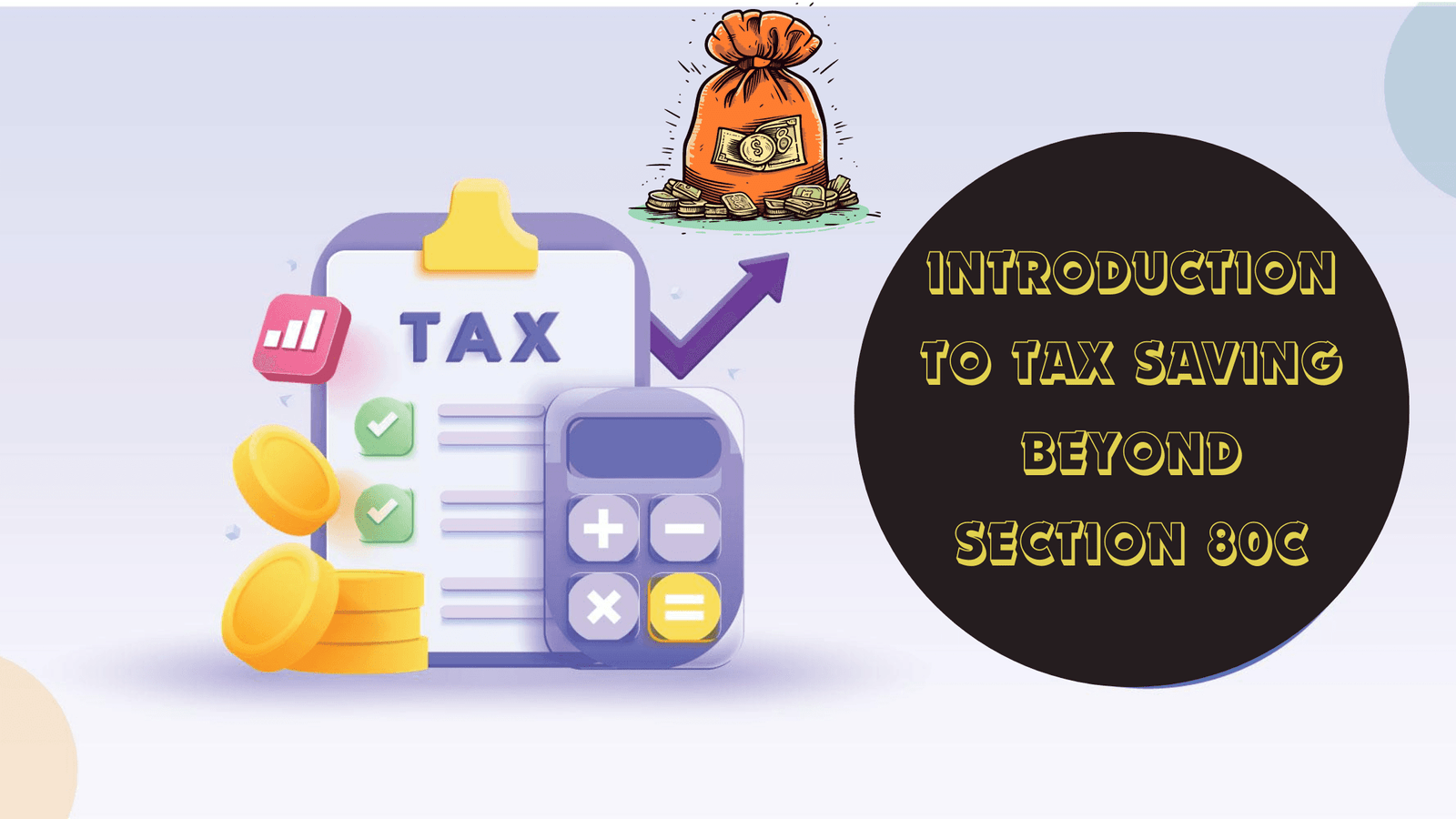Understanding Section 80C and Its Limitations
Section 80C of the Income Tax Act, 1961, is one of the most well-known provisions for tax-saving in India. It allows the individuals and Hindu Undivided Families (HUFs) to claim deductions on various investments and expenses, thereby reducing their taxable income. The primary objective of Section 80C is to encourage taxpayers to save and invest in specified financial instruments.
Under this section, an individual can claim a maximum deduction of up to INR 1.5 lakh per financial year. The eligible investments and expenditures include contributions to Employee Provident Fund (EPF), Public Provident Fund (PPF), National Savings Certificate (NSC), and Tax-Saving Fixed Deposits (FDs), among others. Additionally, tuition fees for children, life insurance premium, and principal repayment on home loan are also covered under Section 80C.
Despite the variety of options available under Section 80C, the annual limit of INR 1.5 lakh often falls short for many taxpayers. With the rising cost of living and inflation, individuals seeking to maximize their tax savings may find this cap restrictive. For instance, employees contributing to the EPF may find that a substantial portion of their INR 1.5 lakh limit is already utilized, leaving limited room for other investments and expenditures.
Moreover, high-income earners and those with the significant financial commitments, such as home loan repayments or children’s education fees, may find it challenging to fully optimize their tax savings within the confines of Section 80C. As a result, it becomes imperative to explore the additional tax-saving avenues beyond the traditional Section 80C investments.
The limitations of Section 80C underscore the need for a broader understanding of the various tax-saving options available under the Income Tax Act. This exploration will enable taxpayers to make informed decisions and strategically plan their finances to achieve maximum tax efficiency.
Exploring Section 80D: Health Insurance Premiums
Section 80D of the Income Tax Act offers taxpayers the opportunity to claim deductions for premiums paid towards health insurance policies. This provision is designed to encourage individuals to invest in health insurance, thereby promoting financial security while also providing significant tax-saving benefits. Understanding the deduction limits under Section 80D can help taxpayers optimize their tax liabilities effectively.
Under Section 80D, the deduction limits vary based on the age of the insured individuals. For individuals below 60 years of age, the maximum deduction available is ₹25,000 per financial year. This includes premiums paid for self, spouse, and dependent children. For senior citizens, aged 60 years and above, the deduction limit is higher at ₹50,000. Additionally, if a taxpayer pays premiums for health insurance for their parents, an additional deduction of ₹25,000 is available. If the parents are senior citizens, this deduction can go up to ₹50,000.
For very senior citizens, who are aged 80 years and above, and are not covered by any health insurance, medical expenditure incurred on their behalf can be claimed as a deduction under Section 80D, up to a limit of ₹50,000. This provision ensures that taxpayers can still benefit from tax deductions even if their elderly parents do not have health insurance coverage.
Investing in health insurance is not only a prudent financial decision but also a strategic tax-saving tool. Health insurance policies provide a safety net against unforeseen medical expenses, reducing the financial burden on individuals and families. By availing the deductions under Section 80D, taxpayers can lower their taxable income, thereby reducing their overall tax liability. This dual benefit of financial protection and tax savings underscores the importance of health insurance in an individual’s financial planning.
In summary, Section 80D plays a crucial role in tax planning by offering deductions on health insurance premiums. Understanding the specific limits and benefits under this section can help taxpayers make informed decisions, ensuring both tax efficiency and financial security.
Leveraging Section 80E for Education Loan Interest
Section 80E of the Income Tax Act plays a crucial role in providing tax relief for individuals who have taken education loans. This provision allows for the deduction of interest paid on loans taken for higher education, thereby alleviating some of the financial stress associated with educational expenses. To take advantage of this deduction, it is important to understand the eligibility criteria, the types of loans that qualify, and the duration for which these deductions can be claimed.
Firstly, the eligibility criteria for Section 80E are straightforward. The deduction is available to individuals who have taken an education loan for themselves, their spouse, children, or even for a student for whom the individual is a legal guardian. This broad scope ensures that the benefits of Section 80E can be extended to various family members, making higher education more accessible.
In terms of qualifying loans, Section 80E covers loans taken from financial institutions or approved charitable organizations. These loans should be specifically for the purpose of pursuing higher education, which includes courses undertaken after completing the senior secondary examination or its equivalent. The scope of higher education is broad and encompasses both domestic and international courses, covering fields ranging from engineering and medicine to management and applied sciences.
The duration for which the interest deduction can be claimed is another critical aspect. Taxpayers can claim the deduction for a maximum of eight consecutive years, starting from the year in which the repayment of the loan begins. This prolonged period allows individuals to manage their finances better as they transition into their professional careers.
Leveraging Section 80E for tax deductions on education loan interest is particularly beneficial for individuals pursuing higher education or those supporting their dependents’ educational aspirations. By reducing the taxable income, this deduction helps in easing the financial burden, making quality education more affordable and attainable. As education costs continue to rise, availing of such tax benefits becomes increasingly important for effective financial planning.
Additional Tax-Saving Opportunities Beyond Section 80C
While Section 80C of the Income Tax Act is well-known for offering substantial tax-saving opportunities, several other sections can also help taxpayers reduce their tax liability. These lesser-known provisions, such as Section 80G, Section 80TTA, and Section 24, provide diverse avenues for tax savings.
Section 80G: This section allows taxpayers to claim deductions for donations made to specific charitable institutions. The eligibility criteria include ensuring that the donation is made to an organization that qualifies under Section 80G. Deductions can range from 50% to 100% of the donated amount, depending on the institution’s classification. Additionally, cash donations exceeding INR 2,000 are not eligible for deductions, thus encouraging donations through bank transfers or other traceable methods.
Section 80TTA: This provision enables taxpayers to claim a deduction on the interest earned from their savings accounts. The maximum deduction allowed under this section is INR 10,000. It’s important to note that this deduction is applicable only to interest from savings accounts held with banks, post offices, or cooperative societies. Interest earned on fixed deposits or recurring deposits does not qualify under Section 80TTA.
Section 24: Deduction under Section 24 pertains to the interest paid on home loans. Taxpayers can claim a deduction of up to INR 2,00,000 on the interest component of the loan for a self-occupied property. For properties that are let out, there is no upper limit on the interest deduction, but the overall loss that can be set off against other income is capped at INR 2,00,000 per annum. The loan must be taken for the purchase, construction, repair, renewal, or reconstruction of the property to qualify for this deduction.
By diversifying their tax-saving strategies and exploring these lesser-known sections, taxpayers can optimize their financial planning. It is advisable to consult with a tax professional to understand the full range of options available and to make informed decisions tailored to individual financial situation.
Finally, Thank you for reading by blog on “Introduction to Tax Saving Beyond Section 80C″.
If You have any question related to my blog, Please comment below.

